“Bridgerton” is the series that combined the genre of the romance novels with that of products such as “Gossip Girl”, giving us a reinterpretation of Julia Quinn‘s books in a more jaunty and colorful way, which has conquered audiences around the world.
The Regency era, which goes from the early nineteenth century to the 1930s, was a time of great social, political, and costume changes (let’s keep in mind that it was during this period that fashion magazines were born). The protagonists ranged from Napoleon, Jane Austen, Sir Walter Scott to Mary Shelley. Society began to change and the middle-class bourgeoisie made more and more room for itself in high society and the arts while, with the rise of Napoleon, the predominant style became the Empire one, in a wave of nostalgia and admiration for the great splendors of ancient Rome.
The role of women, as the “Bridgerton” series shows us, was first and foremost to be a perfect wife and mother, and, in particular, for girls in high society, it was normal and necessary to be educated to fulfill this role perfectly from early childhood.
Regency Fashion in Bridgerton
But what was Regency fashion really like?
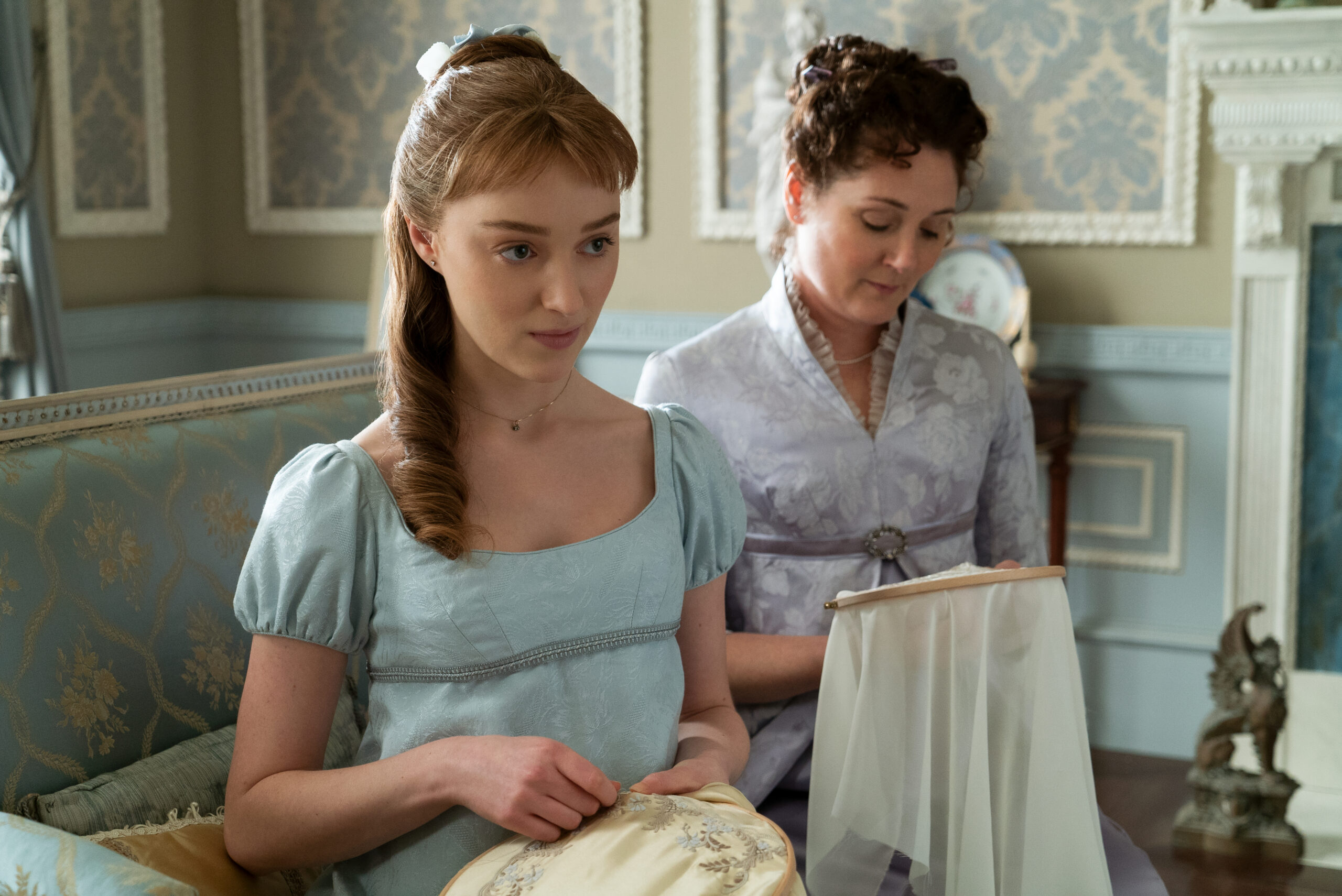
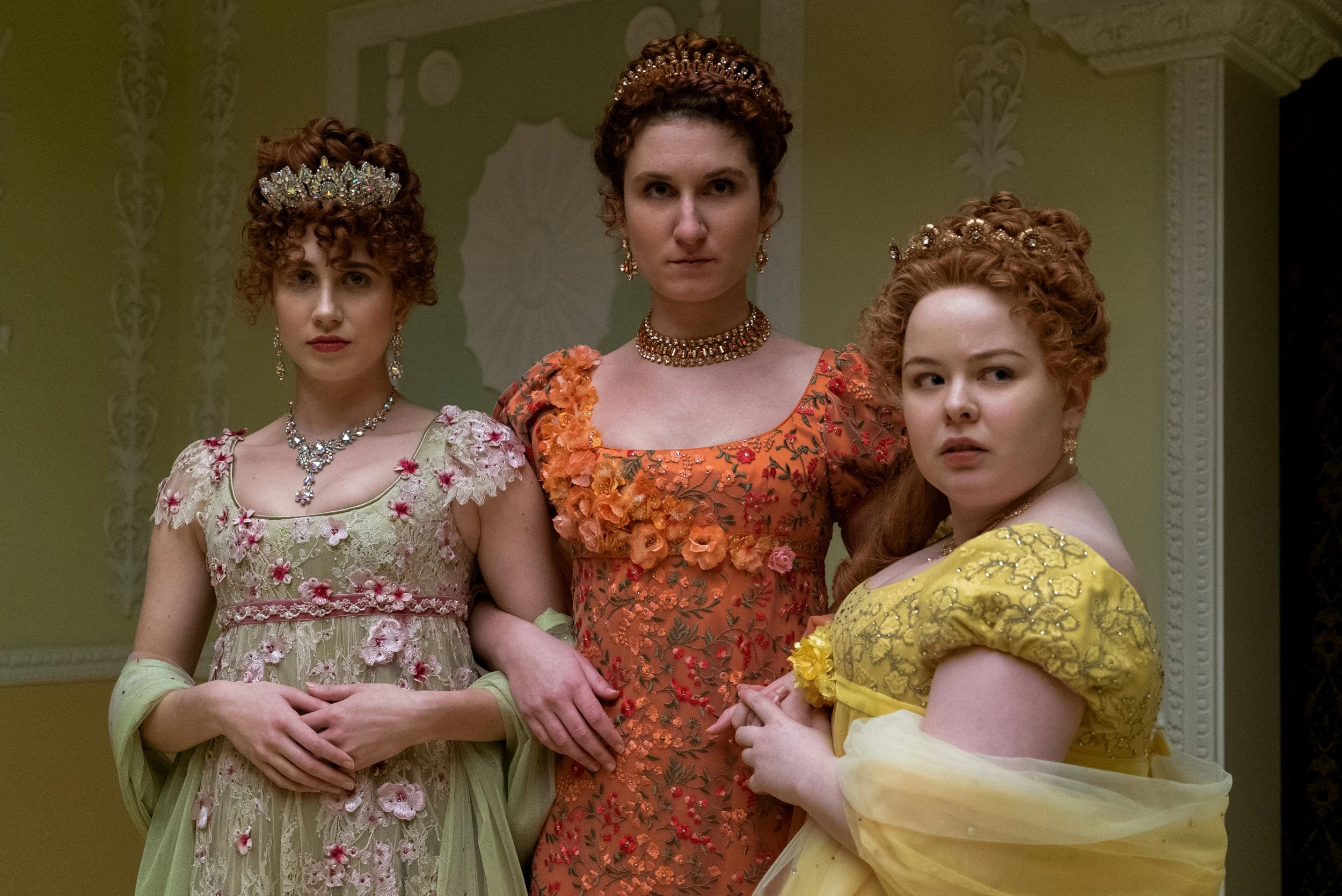
The big focus of society was the Dandyist movement, unconsciously founded by Lord Brummell, who loved everything about style and dress; during these years, attention to dress and aesthetics became, more than ever before, a key point for high society.
The costume designer of the series, Ellen Mirojnick, stated that she was only partly inspired by the historical period of reference; this is because the looks of the protagonists also had to adhere to modern standards. In particular, she was ‘helped’ by Christian Dior’s 1947 ‘New Look’ collection. An enormous work of style and technique; just think that each family has its own characteristic color: light blue, blue, and silver for the Bridgertons, a traditional high society family, unlike the Featheringtons, who have very bright colors, in the shades of yellow, green and orange. A unique style that makes the series, the costumes, and the characters instantly recognizable in the TV series landscape.
Regency fashion in Bridgerton
Empire dresses and the color palette
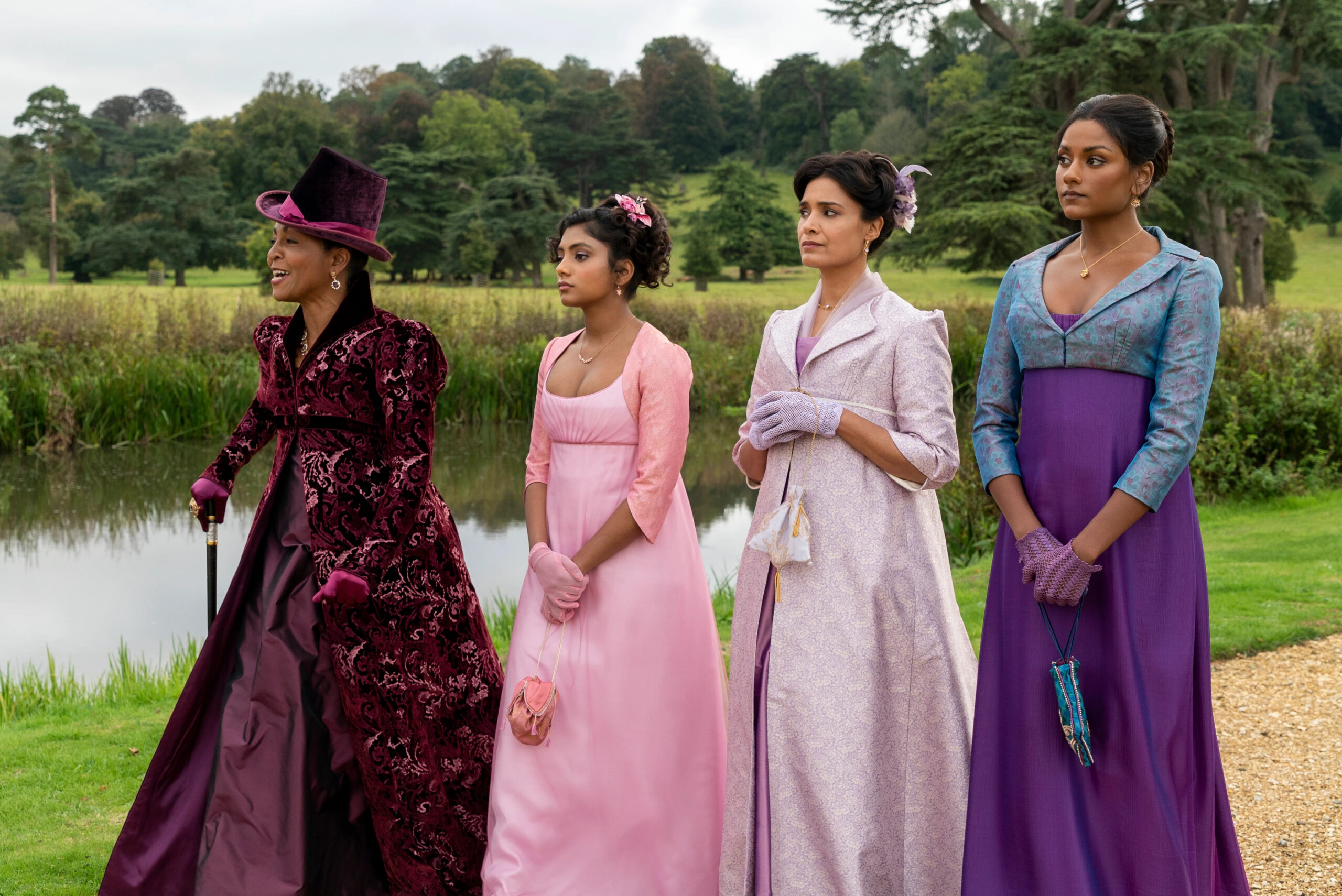
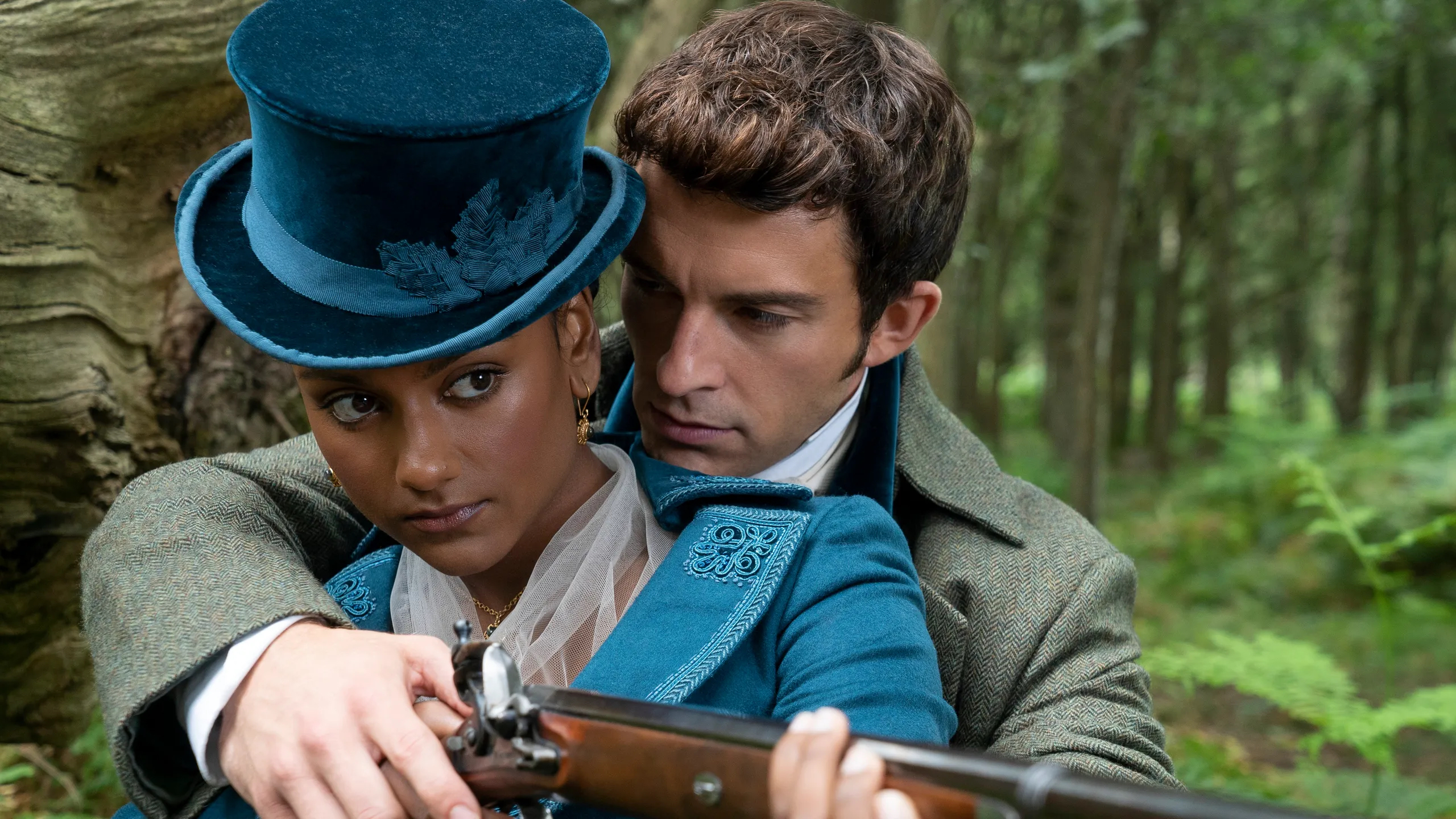
The gowns we see in the series are referred to as ’empire dresses’: with sometimes deep, square necklines, short sleeves, and a very high waist, just below the breasts, they outlined what is known as the columnar figure. Although, soon, these characteristics were “mitigated“: in particular the sleeves were lengthened, first by introducing the balloon shape, and then lengthened up to the wrist and the necklines were accompanied by a blouse worn under the dress, with a high collar; these changes can be seen in the youngest figures of the Bridgerton family, Francesca and Hyacynt and many times on Eloise before the debut of the second season. The color of the ladies was white, but they also used all those pastel shades that we see in Daphne’s clothes, such as pink, blue, and lilac, while the “darker” colors were used by the ladies who were already married or of a certain age; it is an interesting choice to make Kate wear these colors, being her a character who, in the second season, despite not being married, is more independent and “adult”.
The colors then became more whimsical in the evening, on occasions such as dinners, receptions, and balls.
Regency Fashion in “Bridgerton”
The diamond of the season
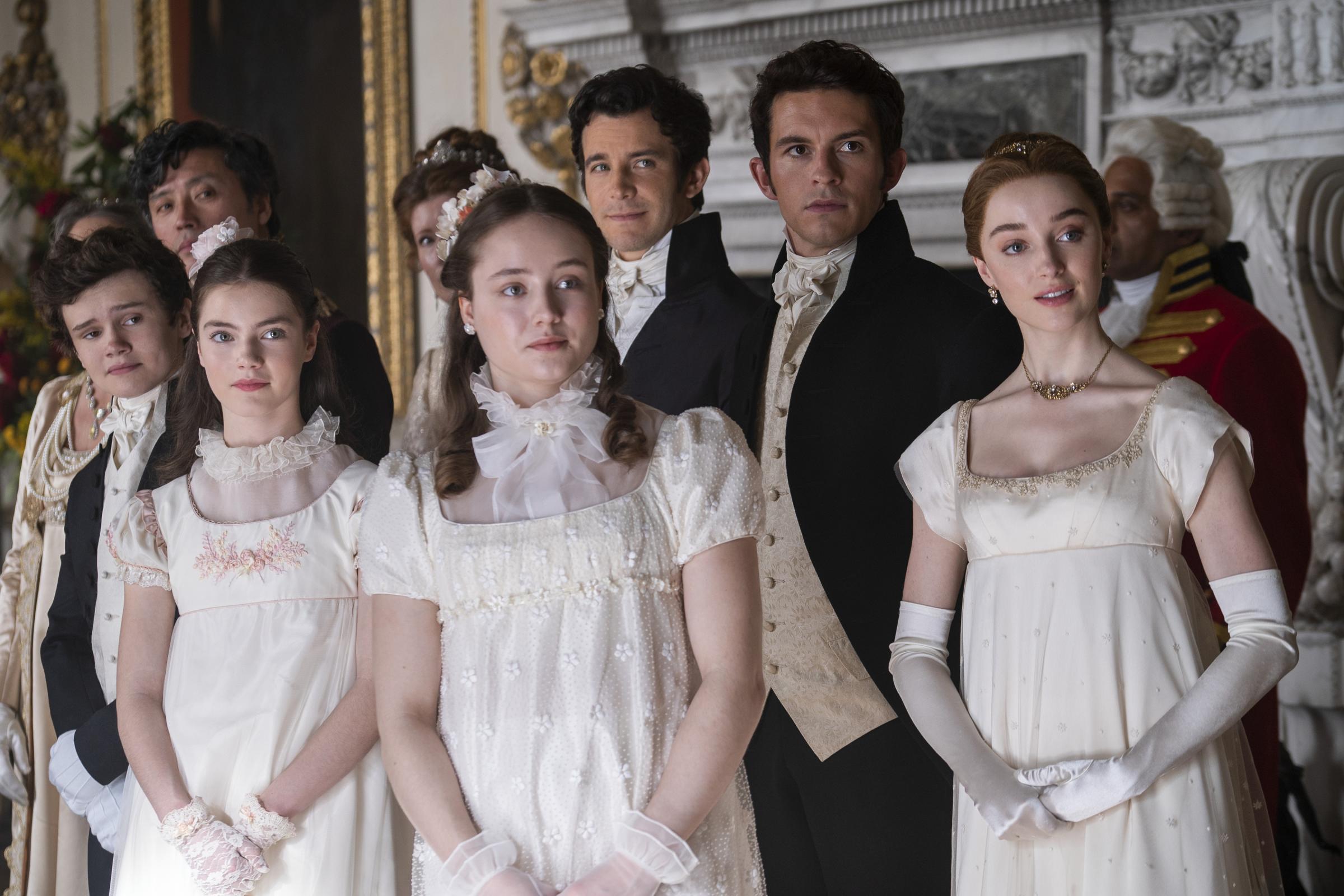
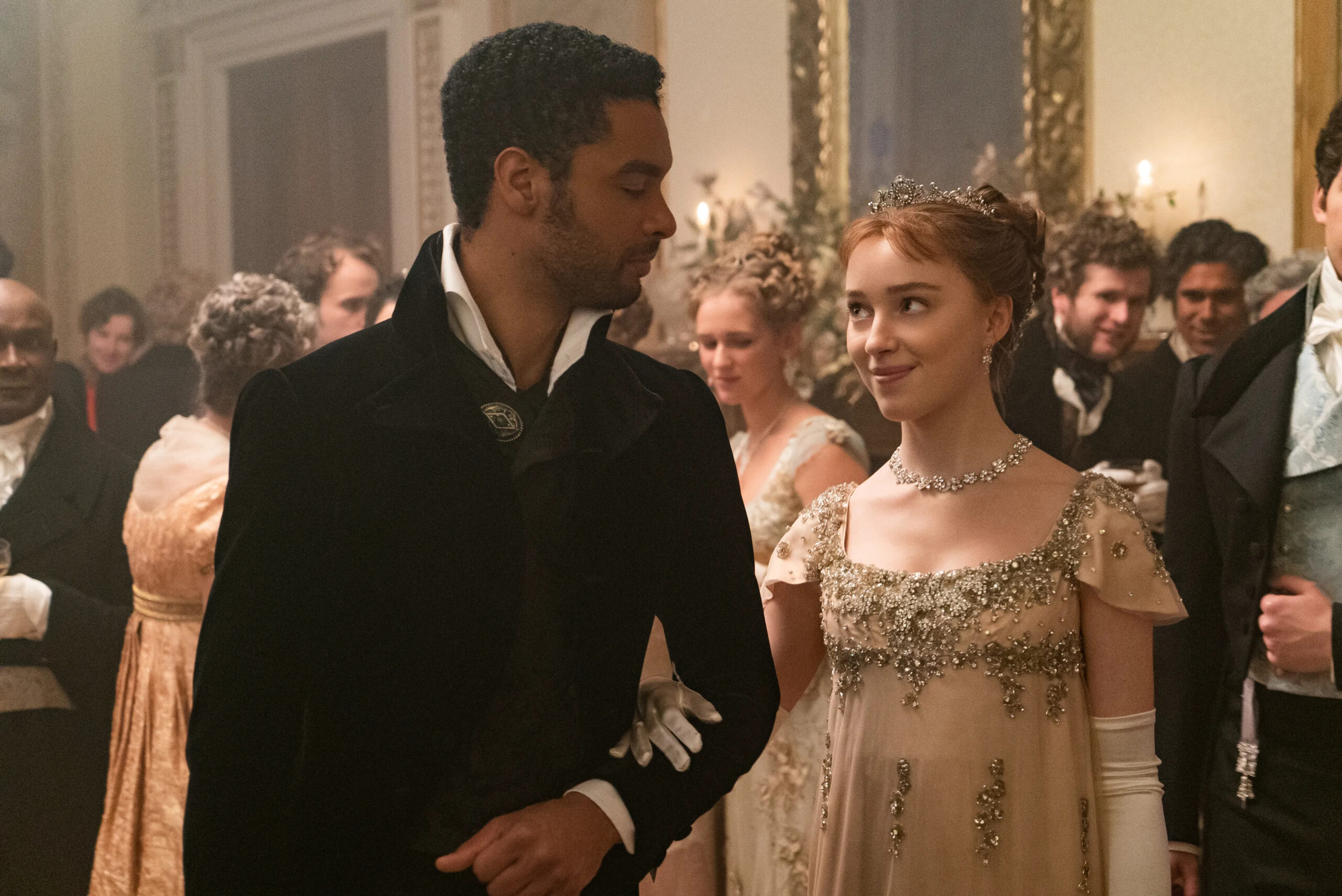
Debut day, and in particular the period when a young woman would join the high society to look for a husband, is another truthful depiction of the early 1800s that we see in the series. During the debut, the girls’ dresses were white and the hairstyles, abandoning the wigs of the 1700s, involved hair tied up in high chignons with curls falling to the sides of the face, adorned with showy feathers such as those of ostrich, pheasant and bird of paradise.
Those who could afford it bought a whole new wardrobe, especially in linen and cotton. For the debut season, the clothes were of course sewn by skilled seamstresses and had to be different from all the others; there was no lack of accessories, all carefully coordinated with the dress. An amusing and historically accurate tidbit that the series includes are those small pochettes that the protagonists wear on their wrists during the balls; in reality, they are small notebooks in which the ladies write down the names of the most interesting men with whom they have danced or spoken. This renewal of the wardrobe concerned, although to a lesser extent, the men, who had their clothes adapted to the new fashions and bought rings, tubas, and walking sticks. The predominant colors were the dark ones, from blue to black, certainly not the red of the Duke of Hestings, but as we know the series took several poetic liberties with the period represented.
Another very important moment was the wedding. When people got married, they used a dress that the ladies would later wear on other occasions: it would have been unthinkable to have a dress used exclusively for the wedding; furthermore, party dresses were already more decorated than our modern wedding dresses. The shoes were made of white satin and the hair could be covered with a bonnet, small tiaras, and a veil, which did not cover the face. Men wore elegant clothes, such as those used on important evenings, which differed from the more comfortable everyday clothes.
A small curiosity: at the end we often see Eloise wearing a sort of short jacket over her clothes, a distinctive feature of hers, which gives her a certain independent personality; well, that jacket really existed in the Regency era and was known as Spencer.
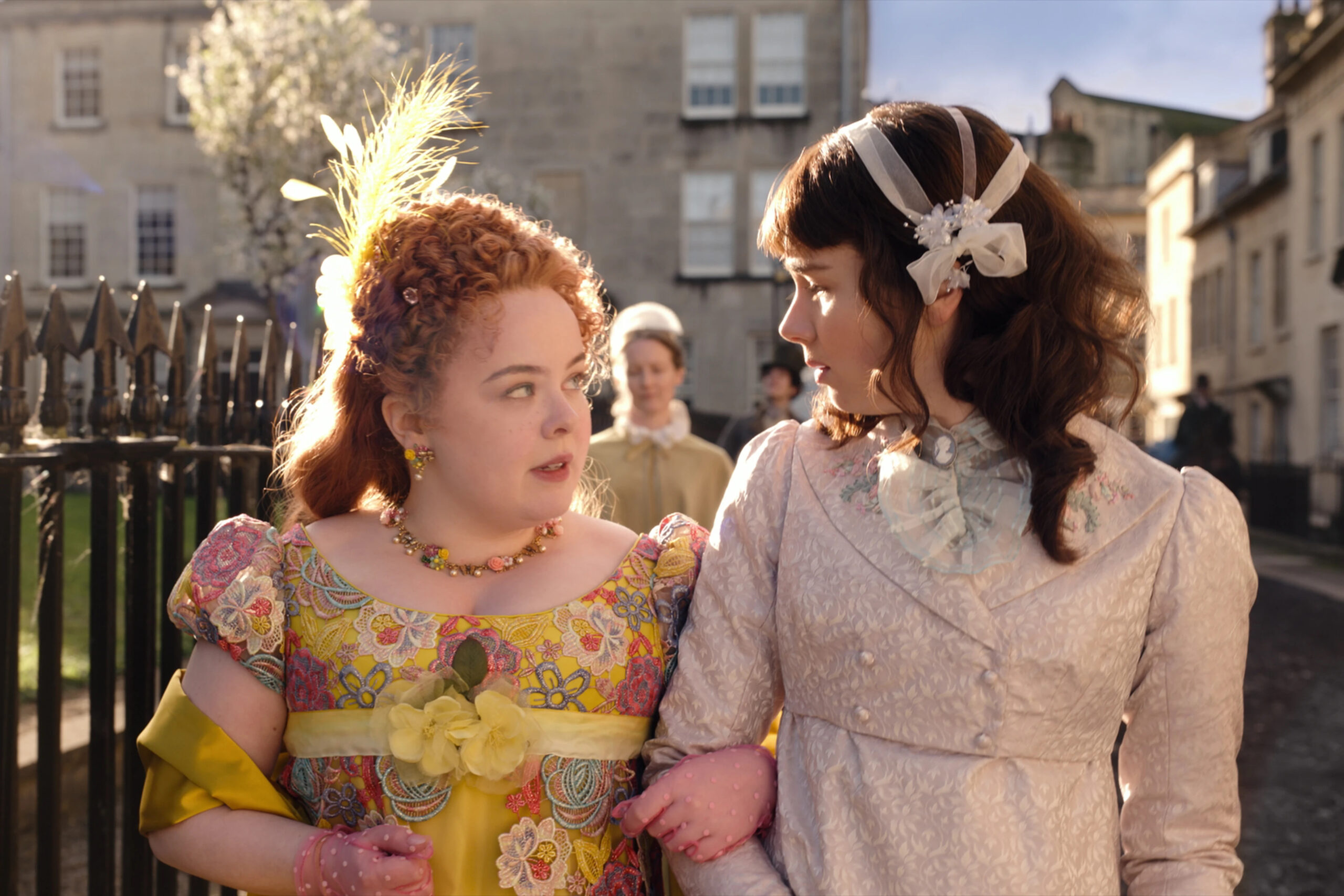

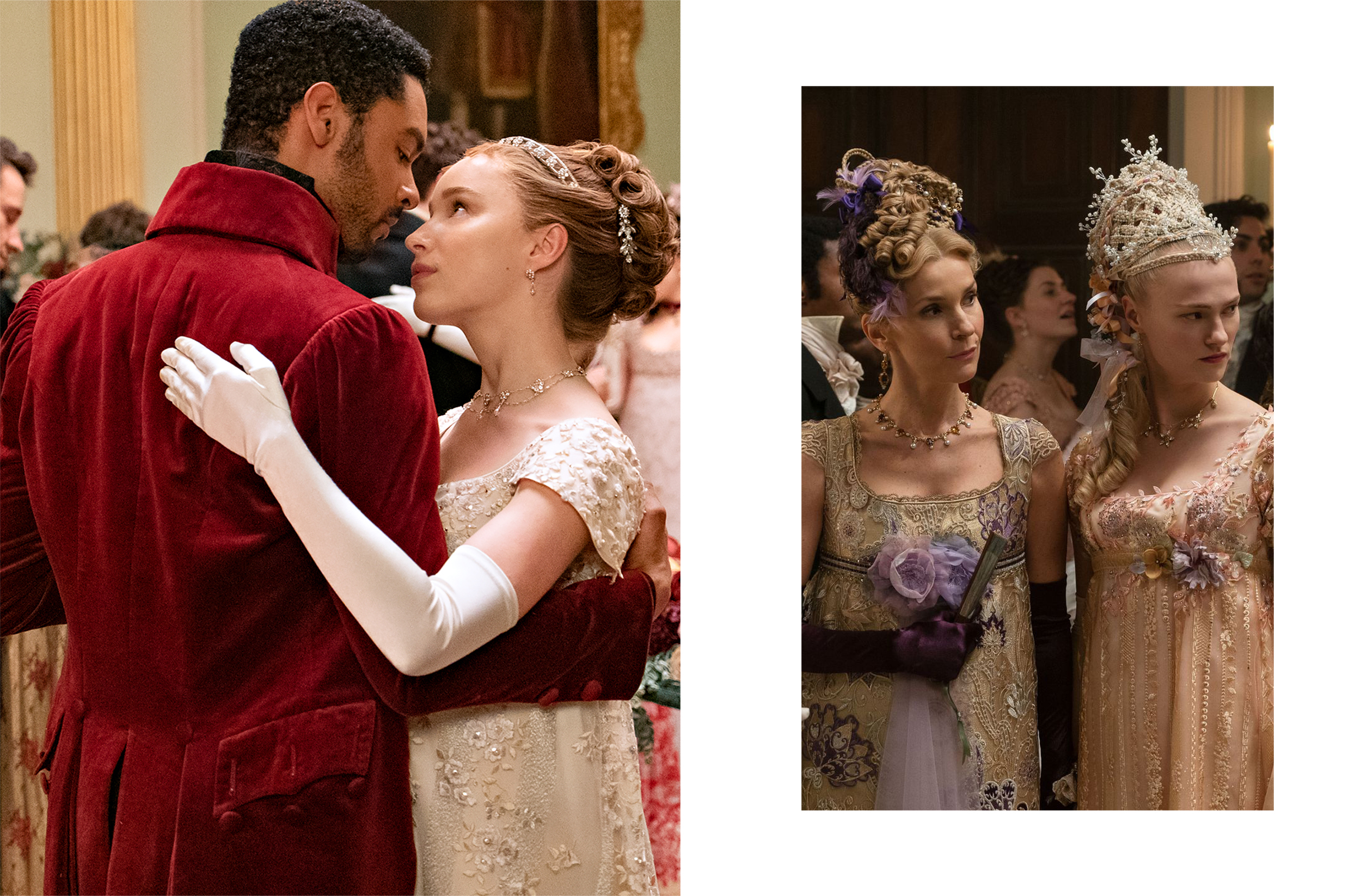
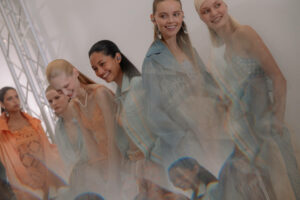
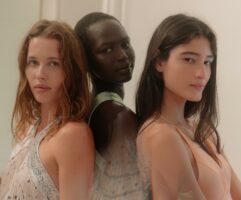
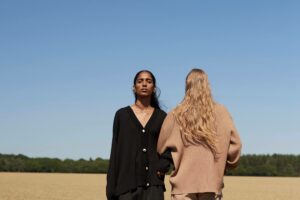
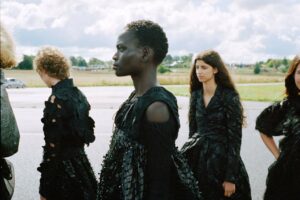
You don’t know when The Regency Era was.
It started with King George III and his sons King George IV and King IV and ended with Queen Victoria.